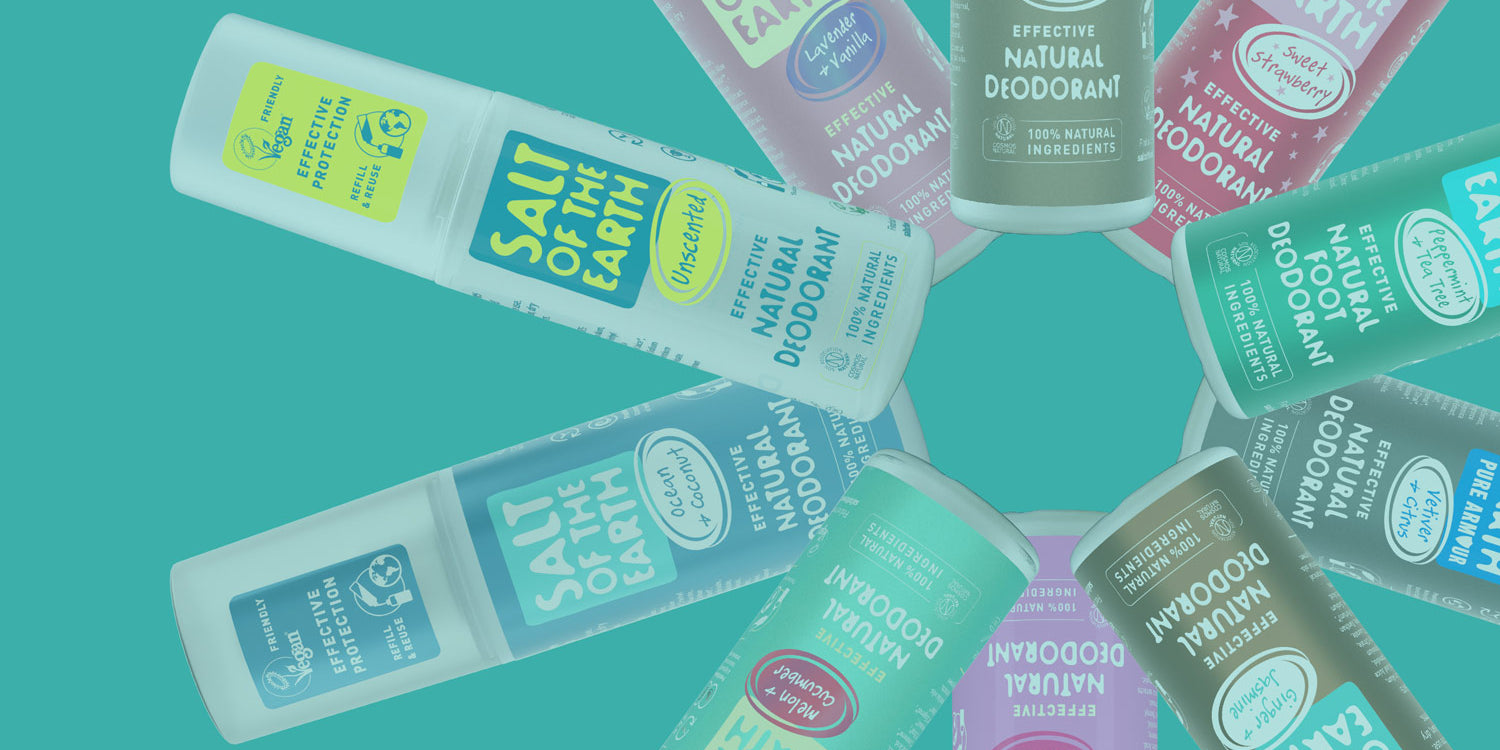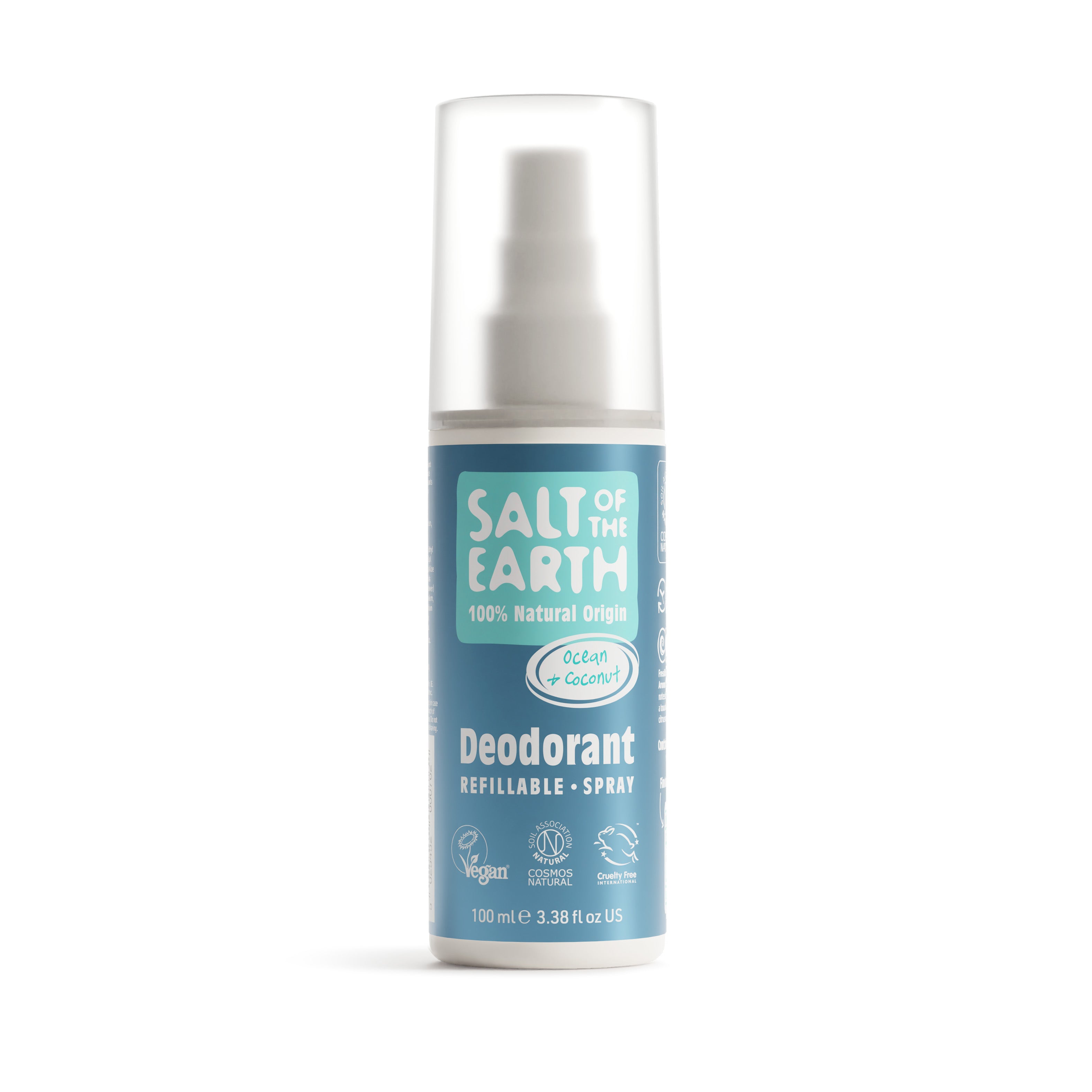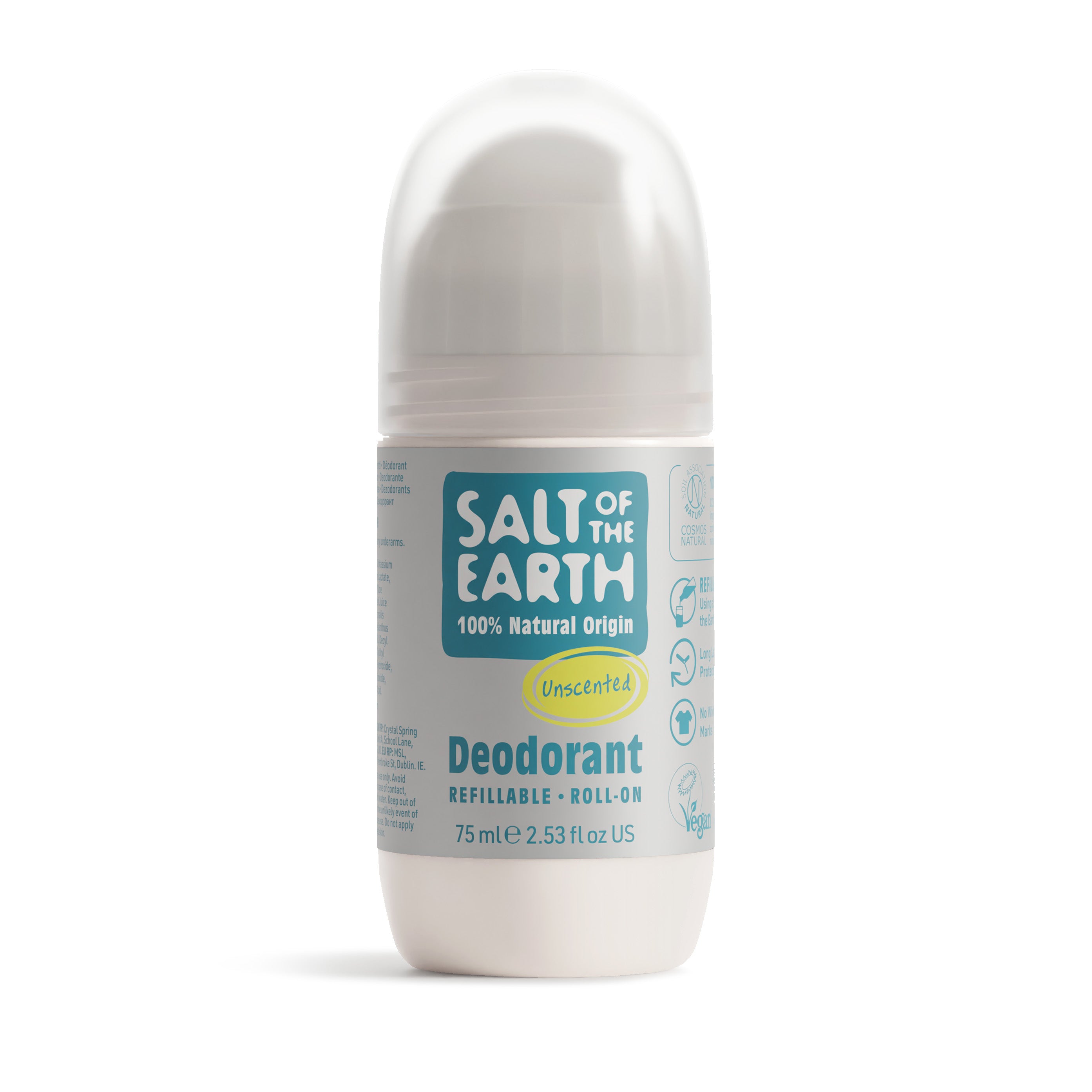3 Steps to Stain-free Armpits
Rest assured you’re not the only one. But is it your bodycare product or the sweat or both causing the problem? Take our quiz to find out and find the right solution.
1. Does the stain smell of sweat or product?
Plenty of antiperspirants and deodorants will automatically leave white marks because they’re not clear products themselves or because the product goes on invisible but leaves residue as it dries. Salt of the Earth deodorant’s active ingredient, mineral salt potassium alum, is naturally clear and is one of the few deodorants that really does dry invisibly. 21 years of repeat customers will attest to this!
2. Are you using deodorant or antiperspirant?
Antiperspirants use chemical compounds, eg aluminium chloride, that cause your sweat duct cells to swell and prevent sweat from escaping. When these, usually quite acidic, ingredients bond with your sweat, new chemicals form which can stain clothing. So your solution to one problem causes another! A natural deodorant on the other hand simply forms a microspically thin antibacterial layer on the surface of your skin. This keeps the bacteria at bay which would feast on stale sweat and then excrete what we call Body Odour.
3. It’s definitely just sweat stains, what do I do?
Sometimes the underarms of a particular top just won’t wash clean in a regular cycle, maybe it’s the colour, maybe it’s the fibre, maybe it was something you ate that week, who knows. There are a couple of tried and tested household ingredients which can help, you’ve probably heard of their amazing multiuse magic! White vinegar and bicarbonate of soda will be your friend. Follow our suggested stain removal instructions here.
How to use Vinegar to Remove Sweat Stains and Odours
This may seem like an odd one, particularly as vinegar has such a strong smell itself; but many people swear by it for neutralising odours on clothes. Vinegar is also touted as being great for getting rid of sweat stains too! Use undiluted white vinegar from the supermarket and buy a big bottle of the cheapest brand as this will last a long time and keep the cost right down, while still being effective.
Directions For getting rid of body odours: Pour white vinegar into a spray bottle and store by your washing machine. Every time you put an item of clothing into the machine, give the underarm, collar and any other area affected by body odour a good spritz of vinegar, soaking the area. Wash and dry clothes as you normally would.
Alternatively, pour a cup of vinegar into the machine along with your detergent, and wash as usual.
For Stains:
Mix One tablespoon of white vinegar with half a cup of water. Rub mixture into sweat stained areas and allow to soak for 20-30 minutes. Launder with detergent on cool.
Baking Soda for the Removal of Sweat Stains and Odour
Baking Soda is something of a wonder product, and is used as a home remedy for many different applications. It is commonly used as a natural alternative to conventional deodorants, thanks to its odour-neutralising quality, and many people use it to deodorise clothing and other fabrics too. Some people even use it to deodorise their pets! Not only can it rid you of unwanted smells, but like Vinegar, when used as a paste (directions below) it can help remove sweat stains too.
Directions Odours and Stains: Combine baking soda and water to make a paste. Start slowly, combining a little water at a time, until you have a consistency that is easy to spread. Spread the baking powder paste onto areas affected by and leave for 20 minutes. Rinse paste off with cold water and wash as normal with your usual detergent.
If you are using a paste, be aware that baking soda could leave a residue after washing, so it may be suitable for use on light coloured garments only.
You can also add Baking Soda directly into your wash alongside your detergent, although this may not be as effective on sweat stains. Both vinegar and baking soda are gentle to clothing.
**Disclaimer**
Before trying the suggestions above, it is necessary to undertake a small patch test on individual articles of clothing to ensure that no fading, colour running or damage will occur. The information given is based on personal experiences and advice collected from Forums and Articles online, and therefore individual results may vary.


























